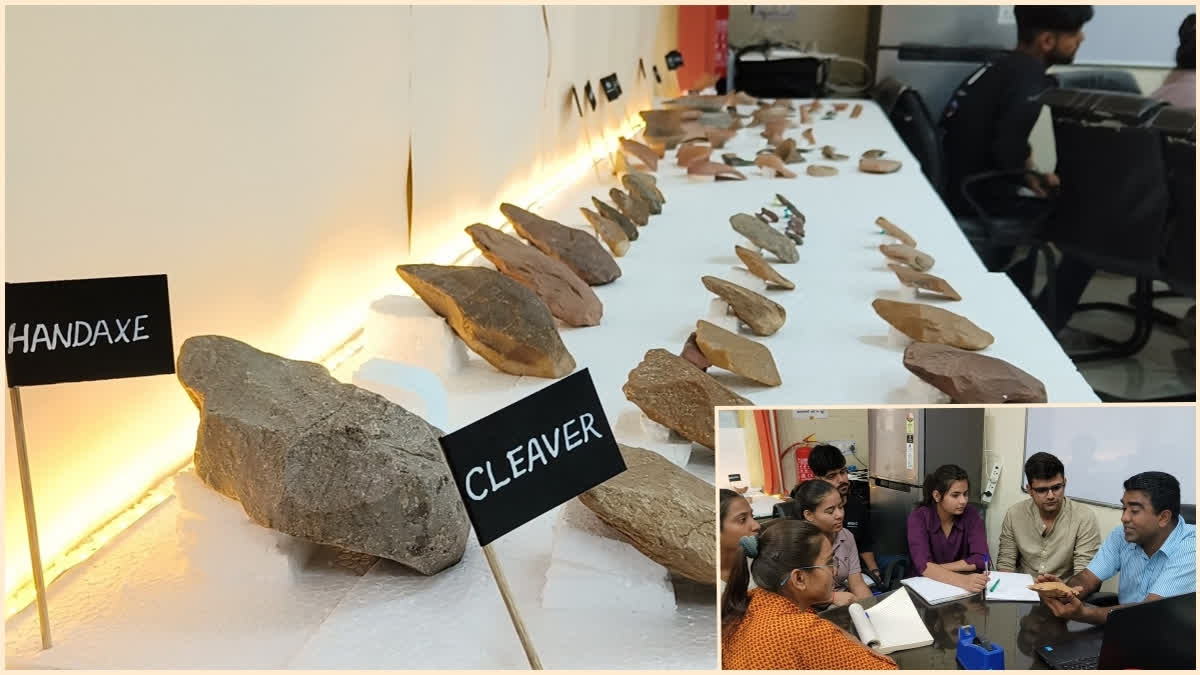Jaipur (Rajasthan): In a novel attempt to document History for the benefit of future generations, the University of Rajasthan here has come up with a unique initiative to preserve tools hailing from the palaeolithic to the historical era.
These tools, which were gathering dust in the library, will now be open to the public at an exhibition titled 'Human Journey' to document the history of human existence more interestingly.
This exhibition is a joint initiative by three departments- Archaeology, Physiology and History. These, tools, over a million years old, will help history enthusiasts from all over the world curate the human journey more comprehensively.
People are fascinated to hear stories of the Stone Age- how people hunted, what they hunted, the tools they used for hunting and much more. To teach History in a more engaging format, professors along with the University administration decided to retrieve these tools from the college archive and exhibit them.
Dr Nikki Chaturvedi, HOD of, the History and Indian Culture Department, said that it is boring to teach the stone age without students not experiencing the tools used back then. "Half the course was going to waste with these tools lying in the dust. Students did not have access to knowledge that was hidden in the dark.
It is important to realise that certain topics cannot be explained theoretically. With the help of these objects, it becomes easier for the professor to explain and teach the chapters. History comes alive by seeing these tools made by primitive man," she said.
Chaturvedi pointed out how the changes in the shape of the tools will help students understand the journey of the transforming structure of the earth and its varying ages. "Humans needed different tools for hunting big and small animals. With the changing size of the animals, the tools to hunt them also changed.
These tools will be documented and shared in the social domain for the benefit of the public at large. Data shared through social media platforms is getting a good response in the international community and we are optimistic about it," she said.
Speaking to ETV Bharat, Dr Tamegh Pawar, Deputy Director of the University's Museology Department, said that the upcoming exhibition would help students study more pragmatically.
"Students understand better when they use all their sense organs. Visualising helps them chronologically grasp a topic. The tools exhibit the journey from stone to wheel age in a nutshell," he said.
ETV Bharat also spoke to Priyanshu, the curator of the university who attributed the cultural development of humans to their biological development. "These cultural artefacts such as hand axe, cleaver, scraper etc. bear testimony to the human activities and how living changed over time," he said.
Muskan, a student from the varsity was excited to be a part of this unique exhibition. " I am thrilled to see how humans began their journey and how they changed over time. Also, I want to know about what tools they made considering the need of the hour. I've heard the tools became sharper and smaller with time," she added.
Read More:



